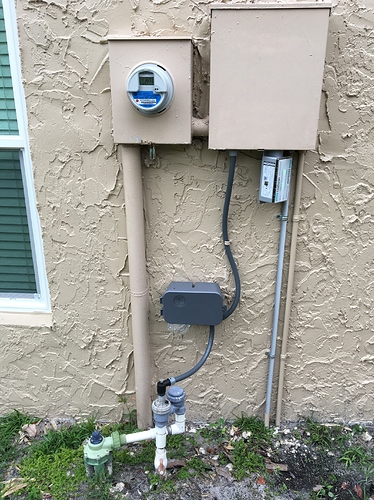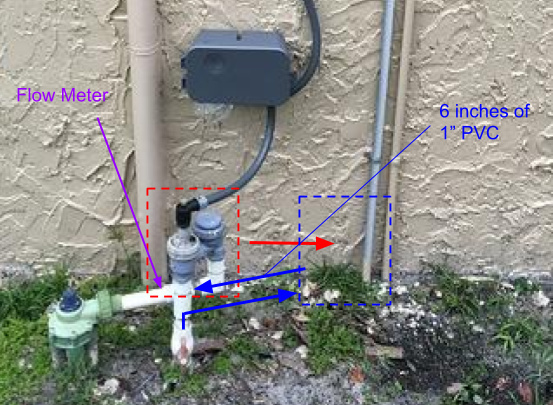Does it matter if the flow sensor is placed horizontally on the line or does it have to be on a vertically running pipe… I’ve attached a pic of how my lines are…or do I need to lengthen the horizontal pipe make sure there is a total of 14 inches of straight line or do I need to modify it somehow to have a vertical line for the sensor…
Gene has been helpful and here is his response…
—————————————————————
I think these types of questions will benefit the rest of the community as well, not to mention that the feedback from a wider knowledge base could produce unexpected insights.
The point is to not be afraid to ask your questions as a general post.
Now my two cents on this particular question:
Little is known about the new flow sensors, they are yet unseen outside of a prototype lab. That being said the technology used within these sensor would benefit from being further away from the upstream elbow in order to more accurately measure the flow.
Can you install the sensor on your setup on the short horizontal space you have available? Yes
Would it be able to detect large scale problems and leaks? Most likely.
Would it provide an accurate water usage data and/or detect smaller issues (such as clogged sprinkler head)? Probably not as well as if you had at least 6 inches of straight pipe between the elbow and the flow meter.
Bends in pipes (elbows) induce turbulence in the water. because the new flow sensor relies on artificial turbulence (induced by the sensor) any external turbulence would induce measurement errors. Bends down the line (after the sensor) should not greatly effect the accuracy of the results.
Some of these errors can be compensated for (setup includes sensor calibration), but for best results it will always better to minimize these errors.
————————————————————
***another question I have—-Ok so for optimal results I can figure out a way to make the horizontal piece longer (which likely would require a couple elbows after the 2nd grey thing (not sure if that is a backflow thing or what) OR is it advised to make the connection between the 2 grey things longer… add pipe between the 2 grey things thereby having to make the horizontal piece longer too…?? Any thoughts



